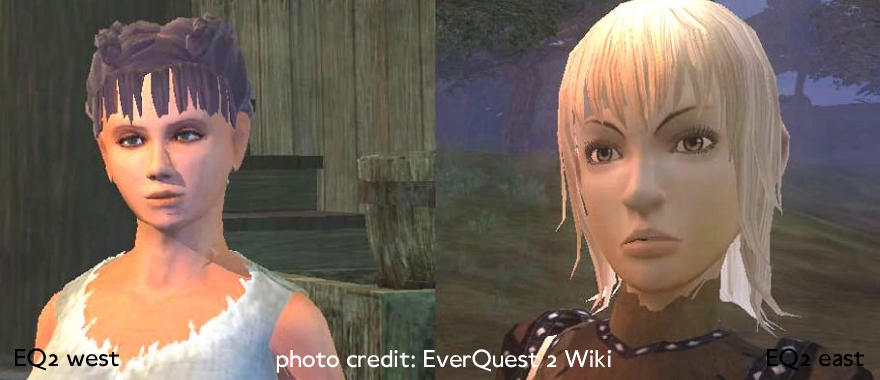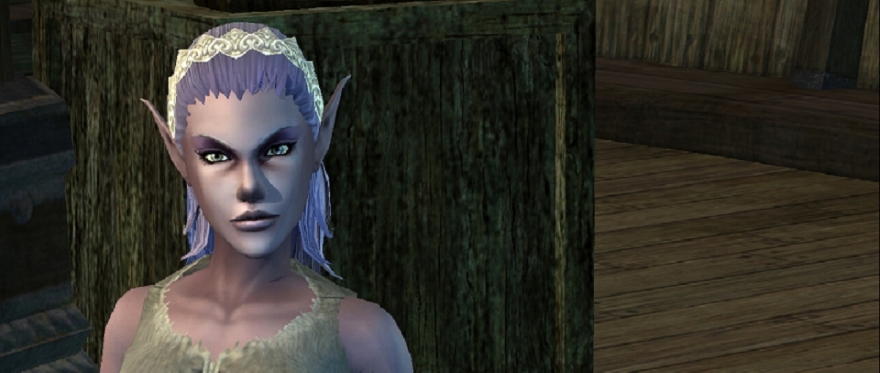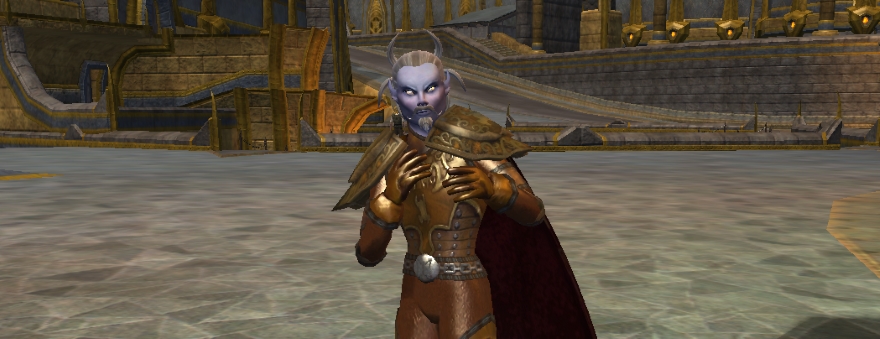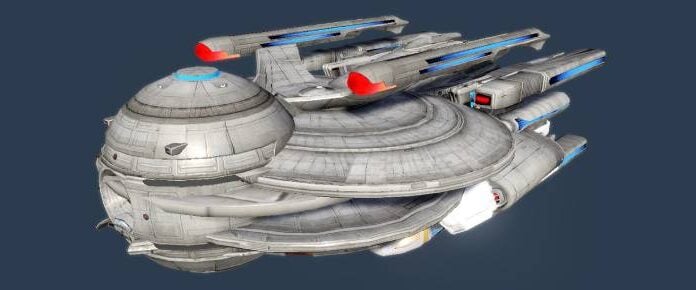
Publishing a video game globally is a monumental task, more so if it is a live online game such as what you’d find with MMORPGs. With different countries and regions come various traditions, prohibitions, language barriers, government restrictions, playstyle expectations, and financial models that must all be sorted out and overcome for these games to come out.
One of the most famous examples of adapting an MMO for use in another country is how World of Warcraft had to make significant graphical changes to its death-themed imagery (including its Forsaken race) in order to get approval to operate in China. Censorship aside, many studios have adjusted their games to include elements appealing to a certain country in order to get more fans (such as WildStar’s panda explosion).
Today we’re going to look at a short-term oddity in EverQuest II’s history, when SOE attempted to expand the game into the east — and how that rebounded back to impact the west.
West meets east
Today it might be hard to imagine an era when World of Warcraft was not the near-immovable king of the MMO mountain. But for more than a half of a decade, EverQuest was “the” MMO that represented the genre and reigned at the top. SOE wanted to capitalize on the game’s popularity and continue the franchise, greenlighting a sequel for full production.
The release came down to a race between the current heavyweight champion and the spunky upstart. While SOE did get EverQuest II out a few weeks before World of Warcraft, the head start did it little good. Blizzard came along to trounce the competition, and SOE found itself playing catch-up for the first time since 1999.
It’s understandable that SOE would want to aggressively promote and expand EverQuest II in the months following, and one of the best strategies was to open the game’s potential playerbase by expanding into other market. Looking at the Asian market and its voracious appetite for all things MMORPG, the studio put into action a plan to bring EQII to the east. However, it wouldn’t be a simple port; the studio wanted to adapt an assuredly western MMO to eastern sensibilities in order to give it a fighting chance.
Thus, SOE partnered with a Taiwan studio named SOGA to “re-culturalize” EverQuest II into a new product called EverQuest II East. As SOE explained, EQII East wasn’t just a localization job; 11 of the game’s 16 races were redesigned with “an Asian style.” This meant larger eyes and more expressive faces to be somewhat similar to anime and other eastern designs.
Another major change for this edition dealt with the game’s control scheme. While western players were used to a mouse-and-keyboard format (WASD to move, etc.), eastern players much preferred a click-to-move format similar to the Diablo series. EQII East was given this control scheme as well. A few exclusive missions were also added to this version, although it didn’t seem like they were dealbreakers for western players who lacked them.
The short life of EverQuest II East
Word of the new version and its controversial character models soon broke in the west, dividing players between the “hate it” and “want it so bad” camps. Meanwhile, SOE proceeded forward with its plan to launch EQII East in China, Korea, and Taiwan in late 2005. Gamania was to handle the operation in the region.
The version was not to be long lived. Localization didn’t meet the locals’ expectations, and most of the game’s vocal dialogue was still in English. SOE didn’t see EQII East take off as hoped, and in March 2006, the studio made the decision to shutter the project and fold all players into existing western servers.
Unique flavor arrives on the menu
Theoretical EverQuest II players who envied the eastern version’s character models got a treat on November 1st, 2005, when SOE introduced the SOGA models to the western game as an alternate option.
“The most extraordinary [first anniversary] gift is the option for US and European players to use unique Asian-styled characters that were only previously available for the EverQuest II East project created by SOGA, an SOE joint-venture development studio based in Taiwan,” SOE put out in a press release. “Earlier this year, news of these models spread to the EQII fan community when screenshots were released to the Asian press. Players expressed a strong interest in these characters, but weren’t aware of the details surrounding the EverQuest II East project that was created by SOE’s SOGA studio in Taiwan. This style adds such unique flavor to the already exciting world of EverQuest II that SOE expects most players to enjoy viewing the SOGA created models.”
Once LiveUpdate 16 came out, players could switch their own clients between the standard and SOGA models, allowing them to see the game as they wanted without forcing unwanted visuals on others. They could even select SOGA models for particular race and gender combinations. Players also had the option to modify their own character’s SOGA appearance if so desired.
In his book MMOs from the Inside Out, MUD1 creator Richard Bartle noted how EverQuest II created a scenario with this where a player could be seeing something complete different from what other players in the area saw, depending on which character model was chosen. He notes that this sort of option could be expanded further to allow players to build models of other people’s characters, but devs have shied away from that due to “identity.”
While the SOGA models might have been a splashy new fad, they proved more controversial than popular and were not embraced as widely as SOE expected. Our MJ said that she has no idea how widespread SOGA models are today but finds them personally “hideous.”
In 2012, the devs revealed that they discussed the issue of the two models often and how they wouldn’t mind going down to a single set: “It would be better overall in terms of being able to create assets, animations and so forth as doing them for all races over two model types is an insane amount of work. We have also discussed doing a whole new set and abandoning the old ones […] But we don’t want to make changes for the sake of them and we’re not sure there’s any way to do this without a negative impact. Some people love their SOGA models, some people love their original models. We can’t disable one without upsetting those who enjoy the other.”
In any case, the alternate model options are still available in the game today as an odd remnant of a failed venture that few people know or remember.
 Believe it or not, MMOs did exist prior to World of Warcraft! Every two weeks, The Game Archaeologist looks back at classic online games and their history to learn a thing or two about where the industry came from… and where it might be heading.
Believe it or not, MMOs did exist prior to World of Warcraft! Every two weeks, The Game Archaeologist looks back at classic online games and their history to learn a thing or two about where the industry came from… and where it might be heading.

















